Slow Cooker Pinto Beans w/ Habaneros & Garlic
It's officially fall and you know what that means: It's pepper season. Peppers are a fall harvest crop and one of my favorite things to grow. It might take all summer for them to ripen in my climate, but it's well worth the effort when they do! Today, it's the habaneros that are ripe enough to pick. And I'm doing one of my favorite things with it: Slow Cooker Pinto Beans w/ Habaneros & Garlic.
This habanero is a plant that I wintered over from last year (yes, peppers are actually perennials; you don't have to treat them like annuals!). A co-worker actually gave me this plant. It survived a bike ride, transplant, being neglected for the summer (I let it bolt, so it produced no fruit the first year), wintered over in my living room, and then came back as a 6-foot behemoth that produced an enormous amount of fruit this year (also yes, peppers are a flowering plant that produces fruit with seeds).
This is also a homegrown plant and there are going to be individual differences in color and potential cross-polination from other peppers in the garden. So, my habaneros are rather large and a bright red, rather than the orange that you'd typically get in the grocery store. Although you can mix and match your own favorite peppers or what's available to you!
Gallery
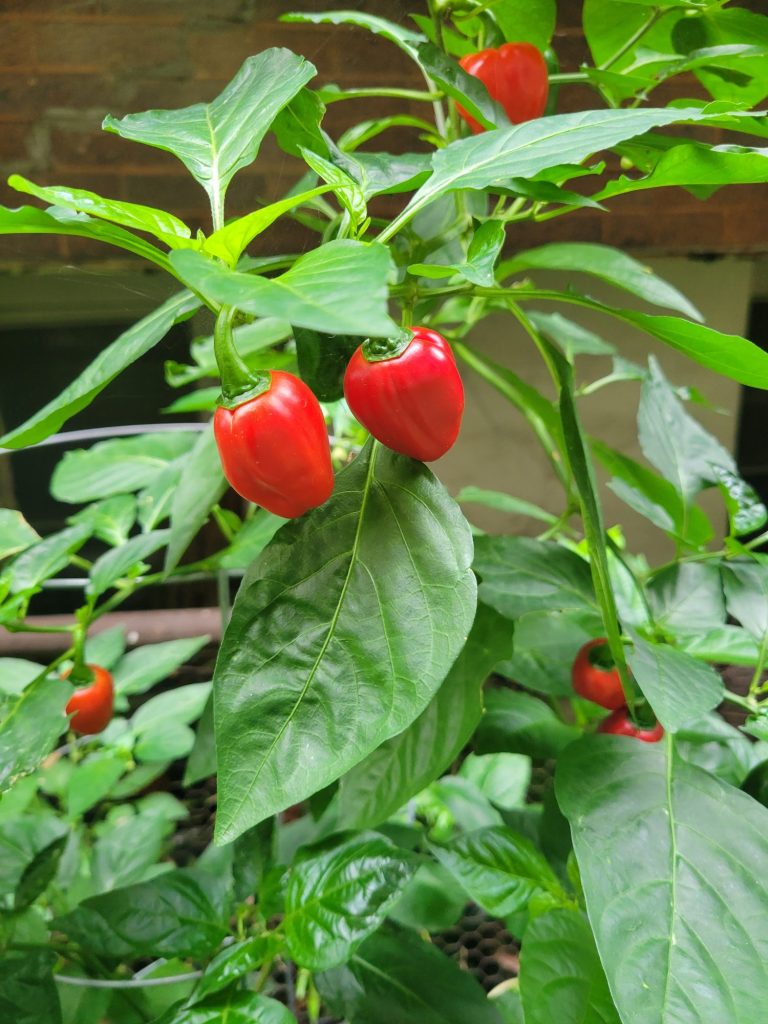
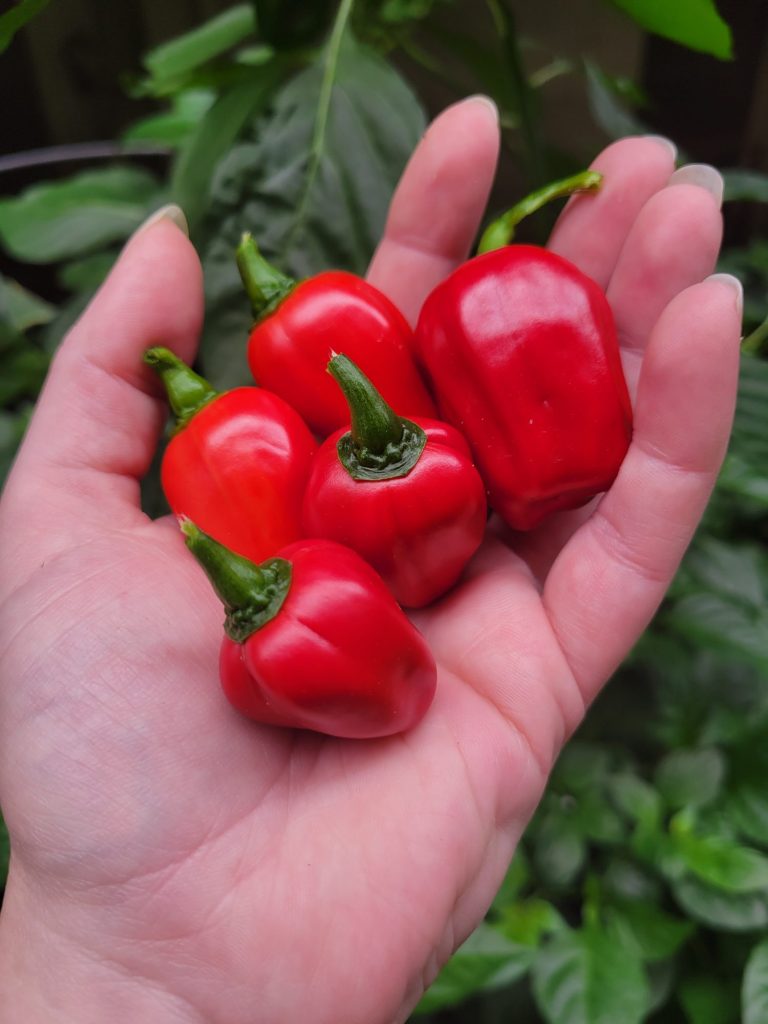
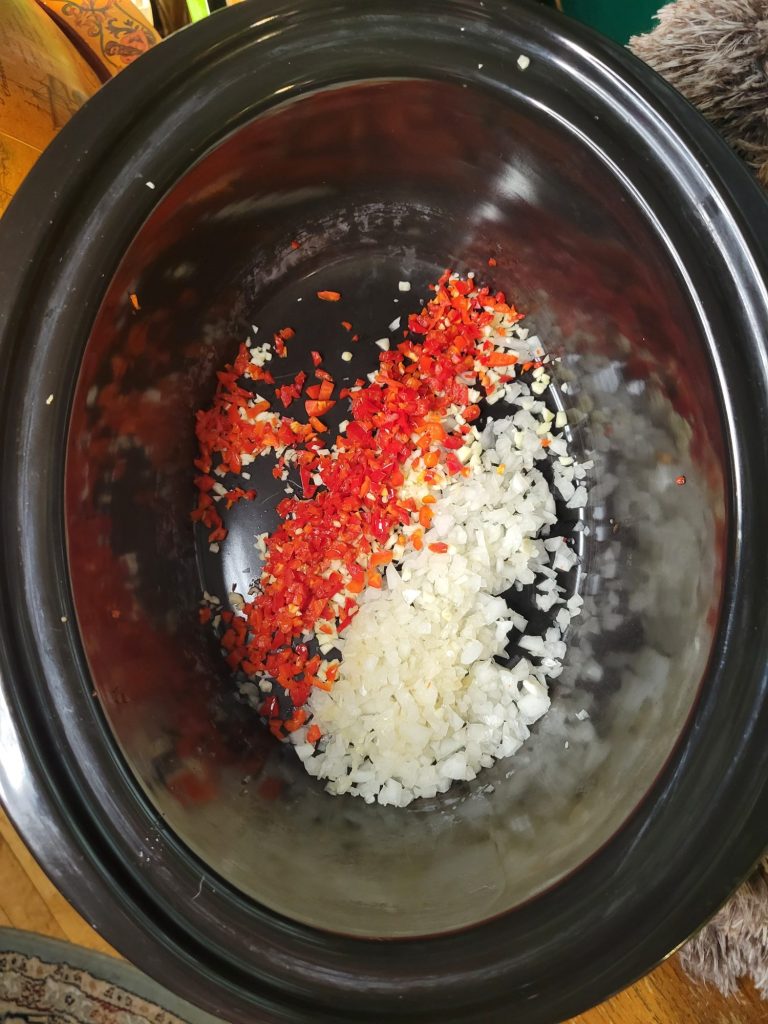
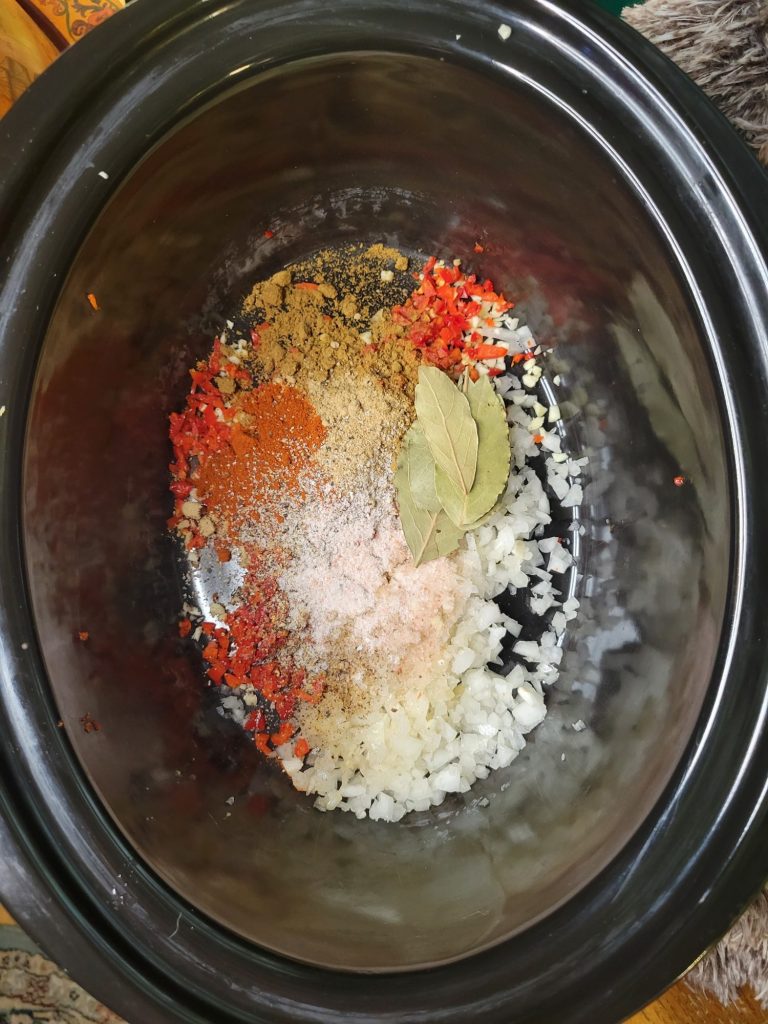

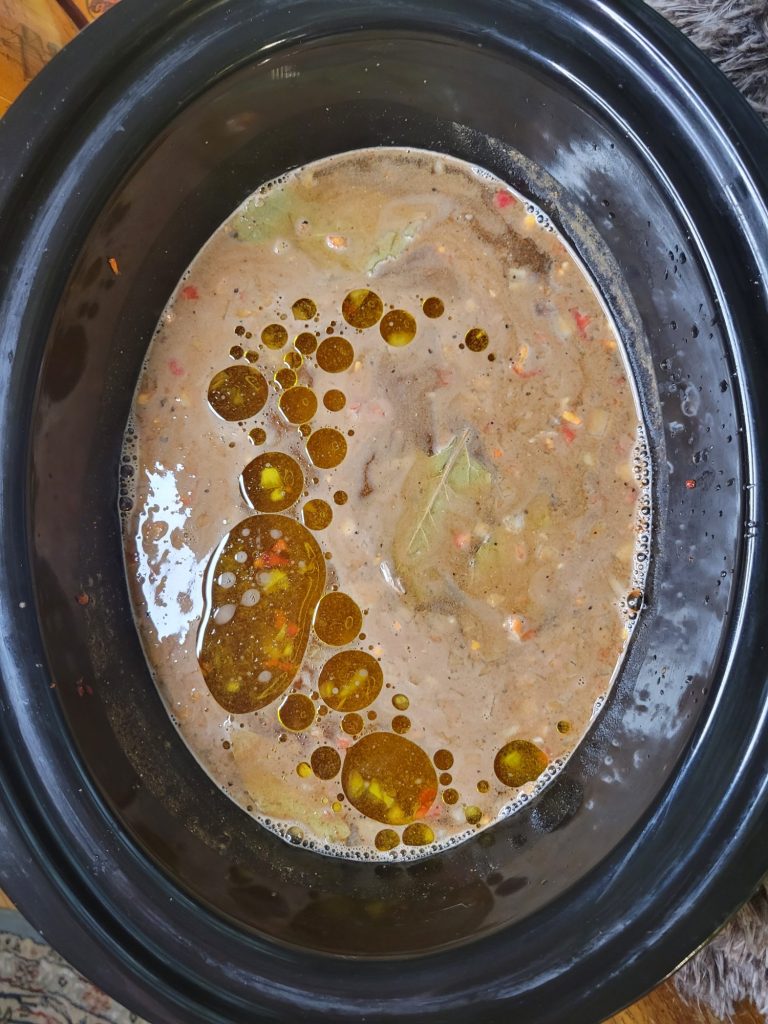
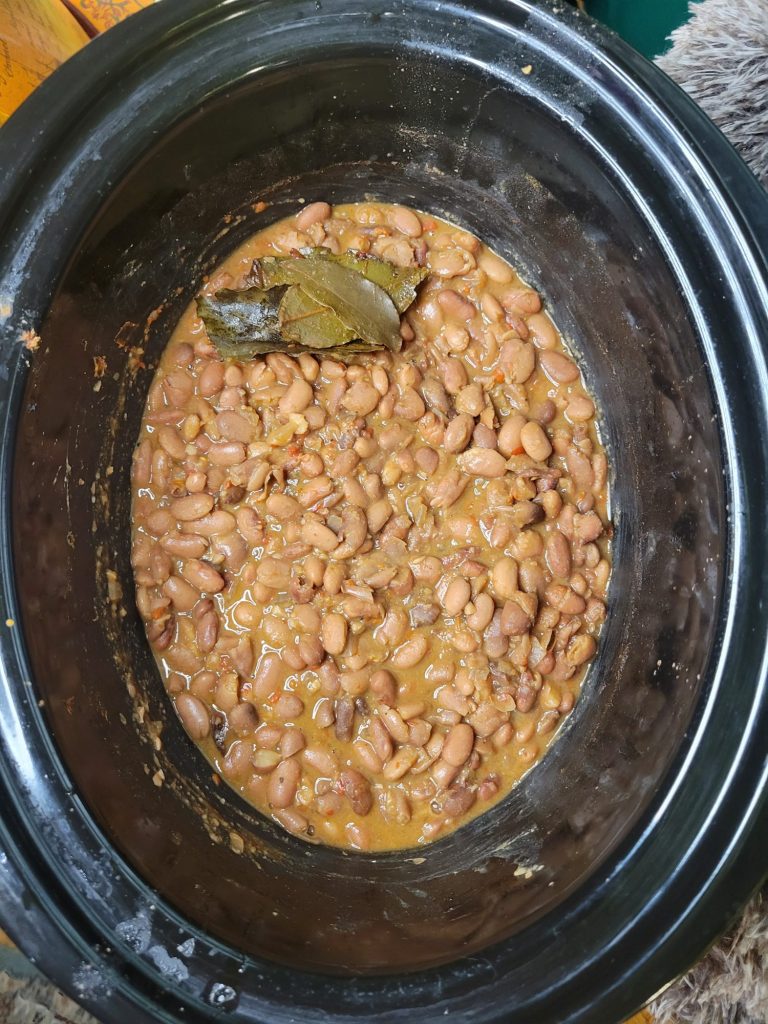

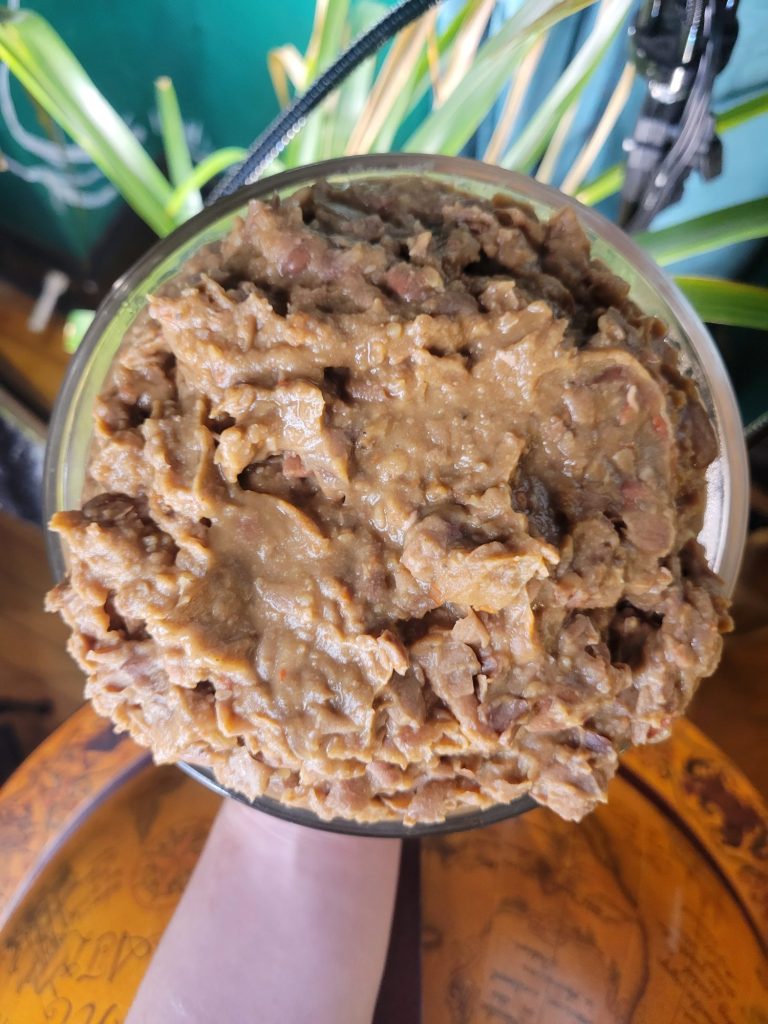


Variations of Slow Cooker Pinto Beans
I tend to make more black beans than pinto beans. Although this isn't necessarily because of ease of cooking or flavor profile. It's because a lot (I'd even wager to say most, or almost all) pinto beans in restaurants and grocery stores are cooked in pork fat. This means that, despite appearing like a vegetarian-safe food, they're usually not. Which is how I end up with a tendency towards black beans, which are much more likely to be vegan. Black beans also tend to have a richer flavor and hold their shape better than pinto beans. Pinto beans are a little bit softer and lend themselves toward refried, or, in this case, no-fried refried beans.
Pinto beans and black beans are relatively interchangeable when you make them at home, though. I swap them out all of the time without changing anything else about the recipe. Just watch out for softer beans (like white beans), which will require less water and a shorter cooking time. And do not cook kidney beans with this method. They contain a toxin that needs to be boiled out.
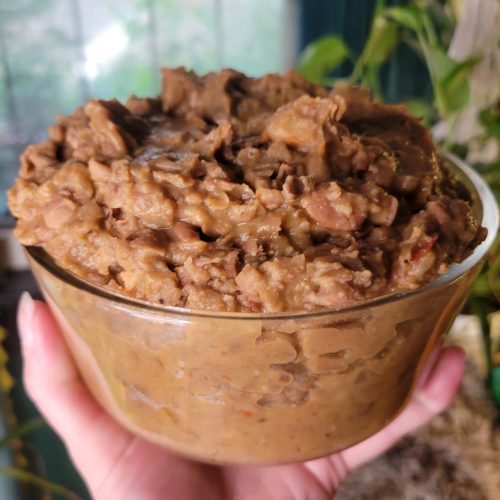
Slow Cooker Pinto Beans w/ Habaneros & Garlic
Equipment
- Crock Pot
Ingredients
- 5 habaneros minced
- 1/4 yellow onion minced
- 3 cloves garlic minced
- dash cumin
- dash coriander
- dash smoked paprika
- dash salt
- dash pepper
- 2 tbsp. olive oil
- 4 bay leaves
- 1 lbs. pinto beans (~2 c.)
- 5 c. water
Instructions
- Add the beans and all of the other ingredients to a crock pot with the water.
- Cook on low for 8 hours, or until the desired consistency is reached. I like to start the beans in the morning and then come back to then after work or before bed to wake up to freshly cooked beans.The beans should retain their shape during the cooking process (and not start to break apart), but should be soft enough to pinch between your fingers or a fork. It's much like the consistency of a baked potato, where you could theoretically turn it into mashed potatoes, but it also stands on its own.There may still be some residual water left in the crock pot after 8 hours. If the beans aren't fully cooked, simply continue to cook until the water cooks in and the beans are the right tenderness. If the beans are fully cooked, you can drain the water or quickly simmer the remainder of it out on the stove. Depending on how old your beans are, they may require slightly different amounts of water to re-hydrate. Older beans will take more water and time, while fresher beans will cook in less time with less water.
- Remove the bay before serving or storing.The bay leaves are for flavor and not everyone wants to eat an entire leaf! So, take note of how many you put in and make sure to remove them after cooking. You can pull them out later. But, if you refrigerate the beans, they'll solidify more when chilled and the bay leaves will be harder to find. It's easier to do this while they're still warm and you can easily sift through them!
- If you want to make no-fry refried beans or more of a bean dip, remove the bay leaves and mash with a potato masher. You can also pulse in a food processor or purée entirely.This process might require more water. So, if you do have additional water left in the crock pot after cooking, you may want to reserve it and add back in if necessary to create a smoother no-fry refried bean consistency.
Tips, Tricks, & Notes
- For more information about making dried beans in a crock pot, I have an entire article on The Fundamentals of Slow Cooker Black Beans. Which has additional tips and tricks along with the rationale for not pre-soaking or rinsing beans and bean substitutions if you want to cook with pinto or other bean varieties.
- With pinto beans, they're a little bit softer than black beans. This means that they can cook in a little bit less time and with potentially less water than black beans (although this can vary wildly based on how long your beans have been drying). If your crock pot has multiple time settings, you can likely get away with 6 hours (mine does not; it's 4 or 8 hours, so I do 8 hours, which also makes them soft enough to mash with ease, if that's your end goal as well).

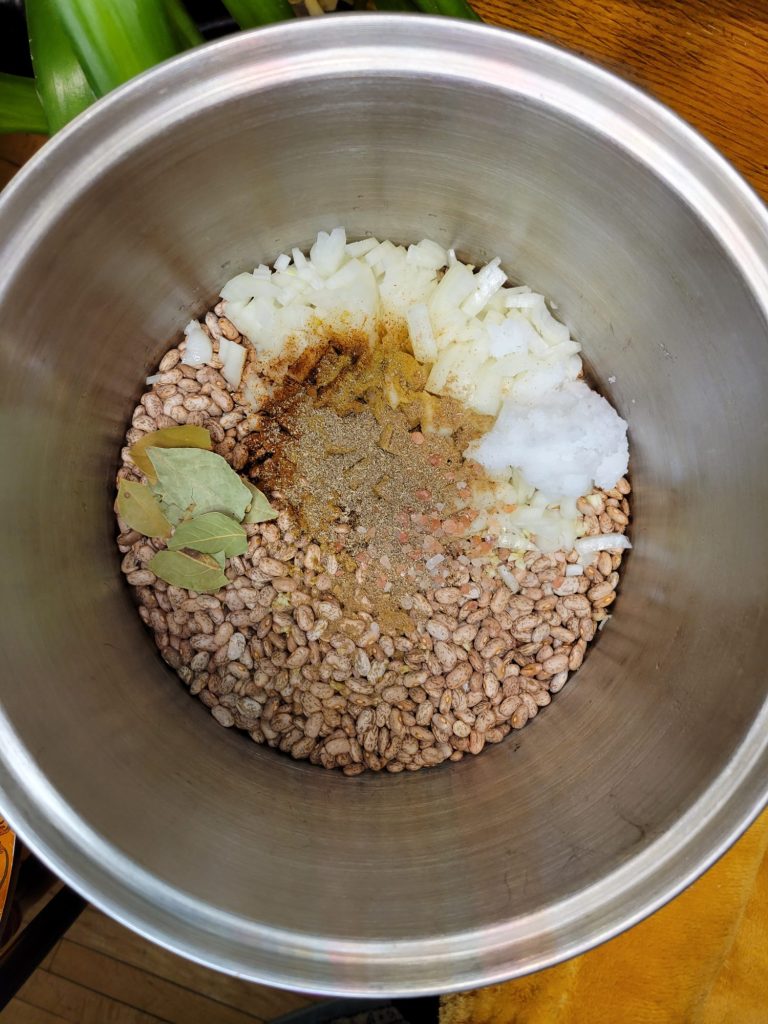
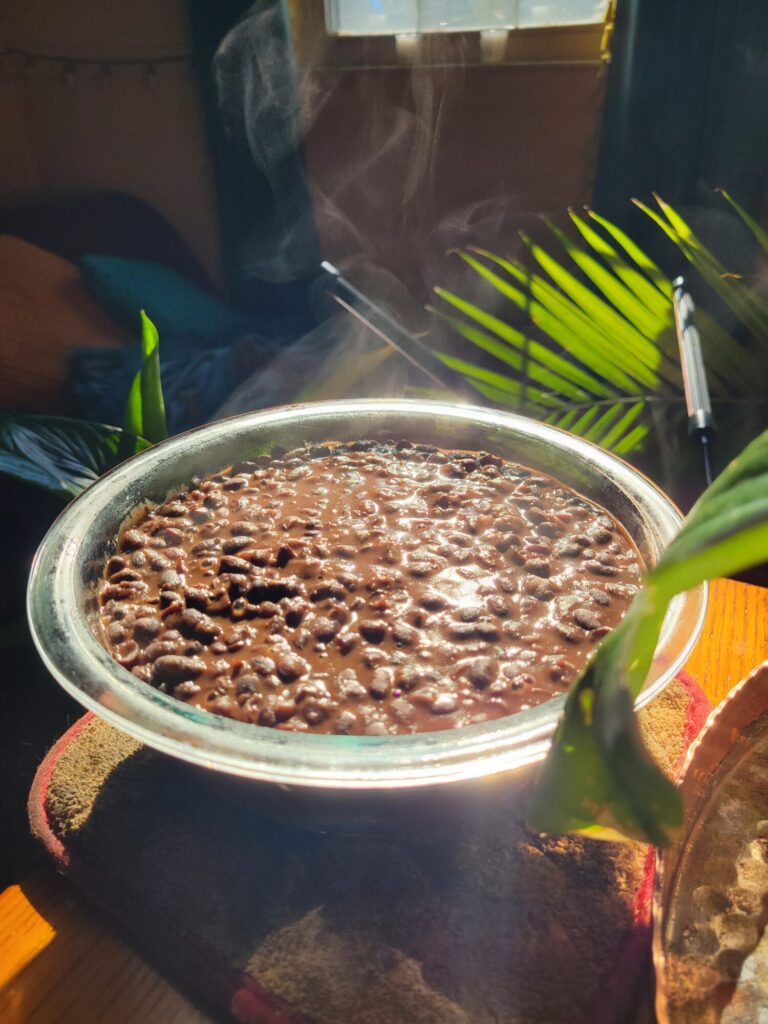


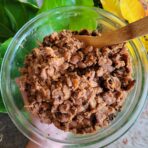

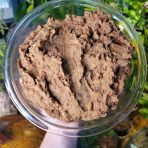


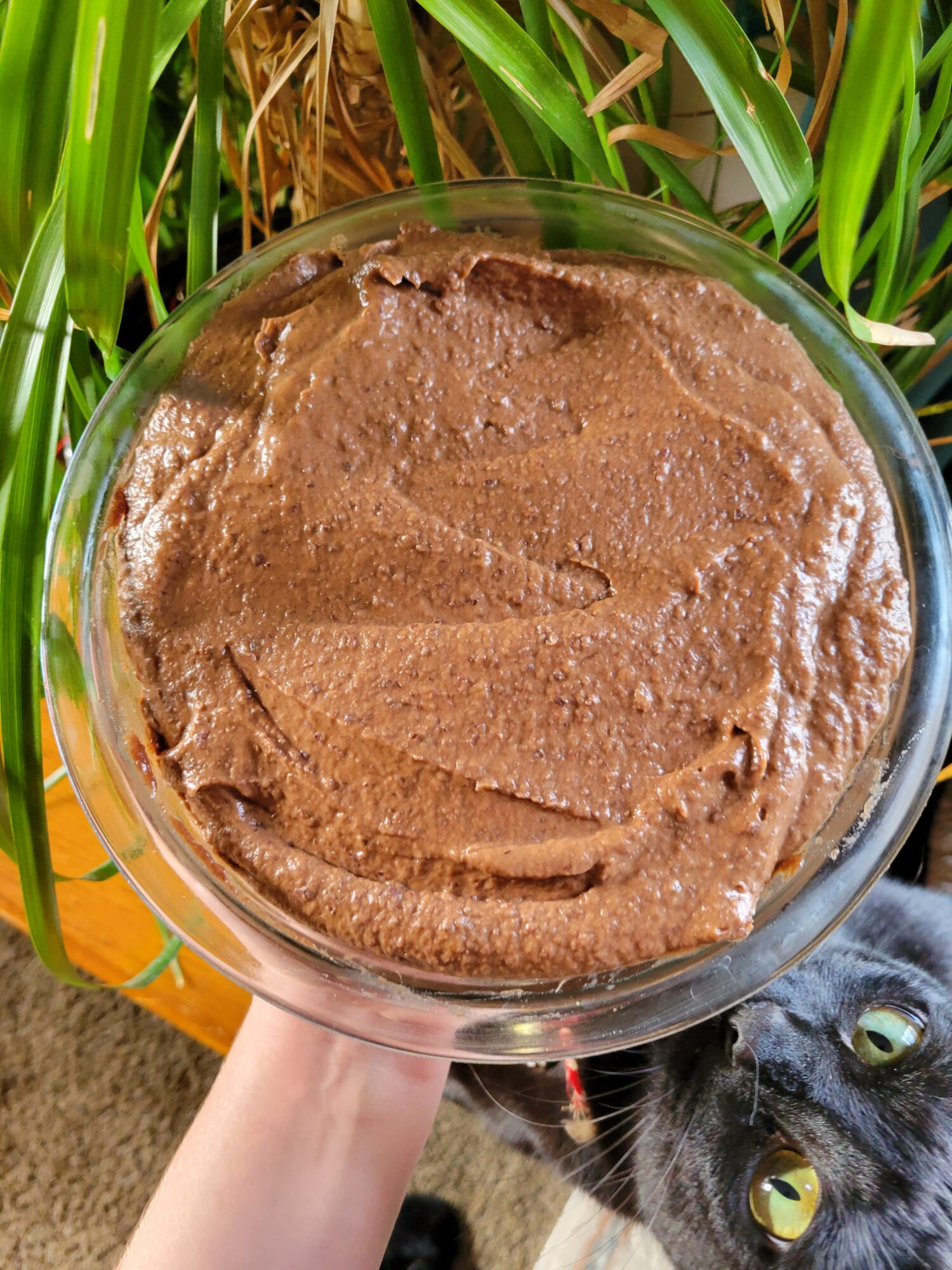
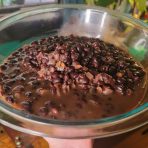
Leave a Reply